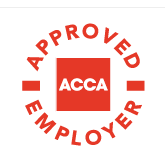File your tax return by 30 December
The 2018/19 self-assessment tax return must be filed online by midnight on 31 January 2020 if a late filing penalty is to be avoided. A later deadline applies where the notice to file a return was not given until after 31 October 2019 – in this case, the deadline is three months after the date of the notice. However, it can be beneficial to file your tax return by 30 December 2019 rather than waiting until 31 January 2020.
Why file by 30 December?
Filing your 2018/19 tax return online by 30 December 2019 may mean that any underpayment can be collected through an adjustment to your tax code. This may be preferable to having to pay it in one instalment by 31 January 2020; instead, collection of the underpayment is spread throughout the following tax year.
The option to have tax collected through the tax code is available where:
- the return is filed online by 30 December 2019 or a paper return was filed by 31 October 2019;
- the underpayment is less than £3,000; and
- the taxpayer already pays tax under PAYE, for example, because they are an employee or because they receive a company pension.
However, HMRC will not collect an underpayment via an adjustment to a tax code if the taxpayer does not have sufficient PAYE income to allow for the repayment or if as a result of coding out the underpayment, the taxpayer would pay more than 50% of their PAYE income in tax or would pay more than twice as much tax on their PAYE income as they would do otherwise.
No need to tell HMRC you want an underpayment coded out
Where the tax return is submitted online by the 30 December deadline and the conditions for coding out an underpayment are met, HMRC will automatically adjust the taxpayer’s tax code for 2020/21 to collect the underpayment for 2018/19.
If you have just been organised in filing your tax return ahead of time and do not want an underpayment coded out, you must let HMRC know by ticking the relevant box on your tax return.
How does the adjustment work?
The underpayment is collected by grossing it up at the taxpayer’s marginal rate of tax and treating it as a deduction from the personal allowances to which the taxpayer is entitled. For example, if an employee has a tax underpayment of £300 for 2018/19 relating to, say, dividend income and the taxpayer pays tax at 40%, the relevant adjustment to the tax code is £750 (£750 @ 40% = £300). Assuming the taxpayer has a personal allowance of £12,500 for 2020/21 and no other adjustments to their code, their allowances will be reduced by £750 to £11,750, giving rise to a tax code for 2020/21 of 1175L.
The underpayment is collected in equal instalments over the course of the tax year – where the employee is paid monthly, the £300 underpayment would be collected in 12 instalments of £25. This may be much less painful than paying it all in one hit.
Action point
Consider whether it would be beneficial to file your tax return by midnight on 30 December 2019 to enable a tax underpayment to be deducted from your pay.
Can you claim small business rate relief?
Business rates are payable on non-domestic properties such as offices, shops and factories. The rates are worked out on the rateable value of the property, but there are various reliefs available including small business rate relief. The relief is not given automatically and many businesses may be overpaying, not realising they are entitled to the relief. However, all is not lost; claims for relief can be made retrospectively, giving rise to a repayment of overpaid business rates.
The business rates calculation
Business rates are worked out by applying the relevant multiplier (set in terms of pence in the pound) to the rateable value of the property. The most recent valuation took place in 2015 and is used as the basis for business rate calculations from April 2017 onwards. You can check the rateable value of your business property online. The rateable value is based on the annual rent that could be expected to be received if the property were let on a commercial basis.
In England, there is a standard multiplier and a small business multiplier. The standard multiplier, set at 50.4p for 2019/20, applies to business properties with a rateable value of £51,000 or more. The small business multiplier, applying to business properties with a rateable value below £51,000, is set at 49.1p for 2019/20. The multipliers for the City of London are higher – the standard multiplier is 51p and the small business multiplier is 49.7p. In Wales, there is a single multiplier of 52.6. So, for example, the annual business rates for a property with a rateable value of £20,000 outside London would be £9,820 – found by applying the small business multiplier of 49.1p to the rateable value of £20,000.
Small business rate relief
In England, small business rate relief is available where the business has only one property and the rateable value of that property is less than £15,000.
Full relief is available where the rateable value is less than £12,000 – A business with a single property which has a rateable value of less than £12,000 pay no business rates.
Taper relief is available where the rateable value is between £12,001 and £15,000. The taper reduces the amount of relief from 100% for properties with a rateable value of £12,000 to 0% for properties with a rateable value of £15,000.
The percentage reduction is found by applying the following formula:
(£15,000 – x) / (£15,000 – £12,000) x 100%.
Example
A small business operates from offices with a rateable value of £12,750. The business is based in Norfolk.
The business rates before deducting small business relief are found by applying the small business multiplier of 49.1p to the rateable value of £12,750, giving a figure of £6260.25.
Taper relief is available. The percentage reduction is 75%.
Thus, applying small business relief reduces the business rates by 75% to £1,565.06.
Claim the relief
Unless a claim is made, the business will not benefit from the relief. The claim must be made to the relevant council, either in writing or online. Once a claim is made, it will apply to future years.
Claims can be backdated, so check bills since the start of the current system in April 2017. Many businesses do not realise that small business rates relief is not given automatically and may be due sizeable repayments. Unless a claim is made, they will continue to overpay.
Need help or advice to claim?
Contact








